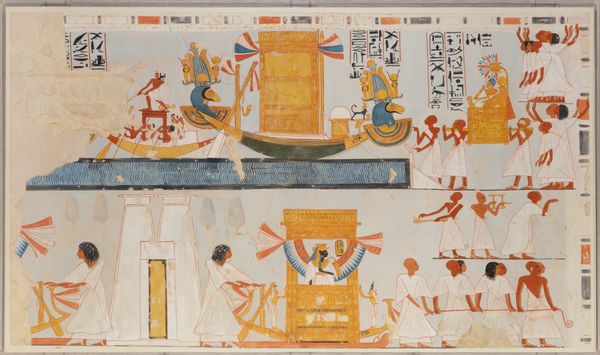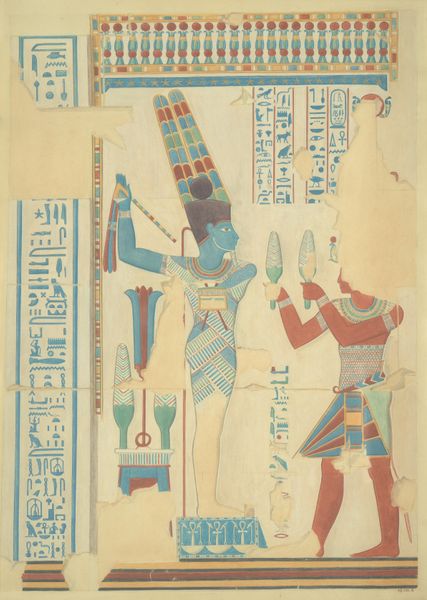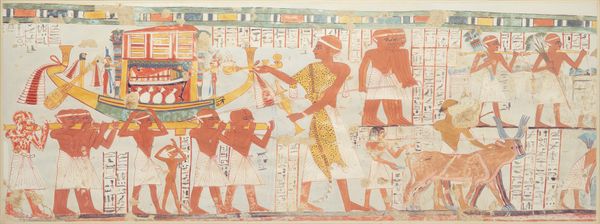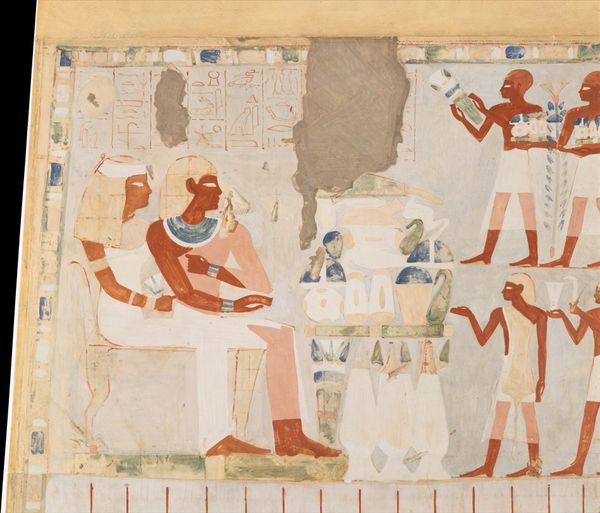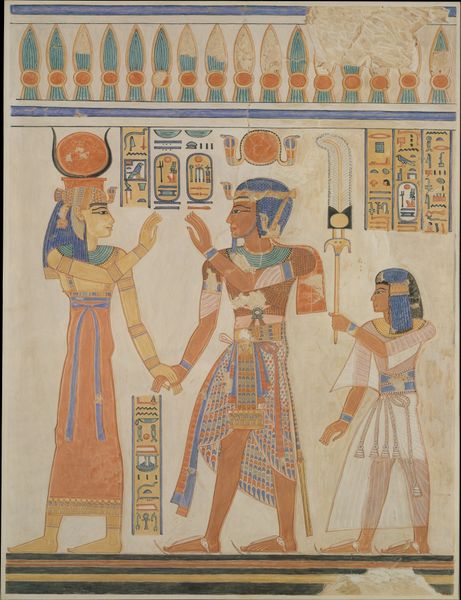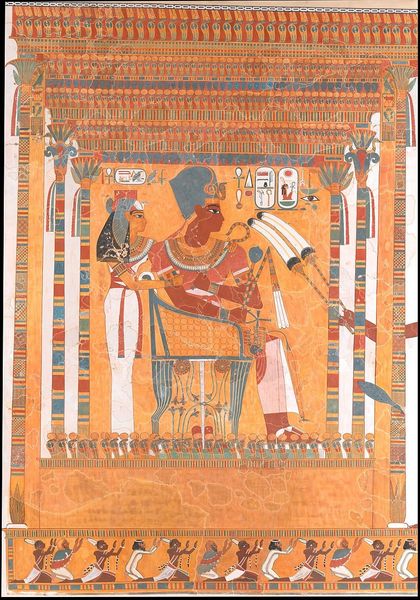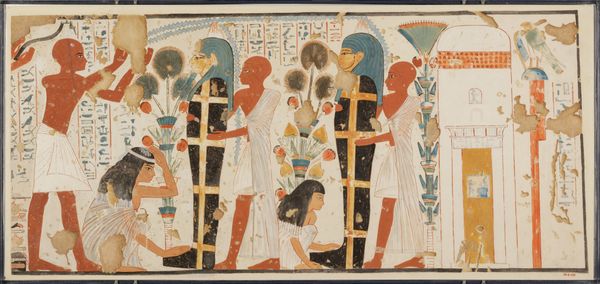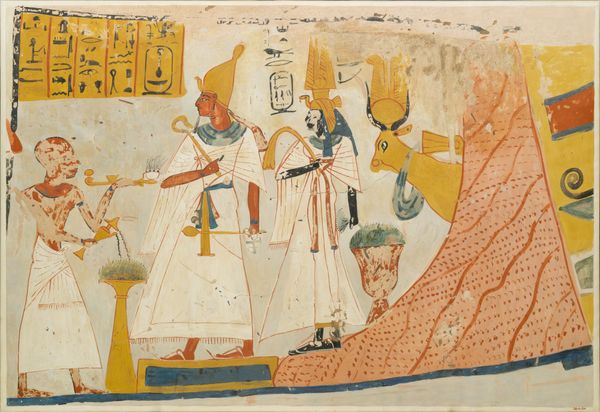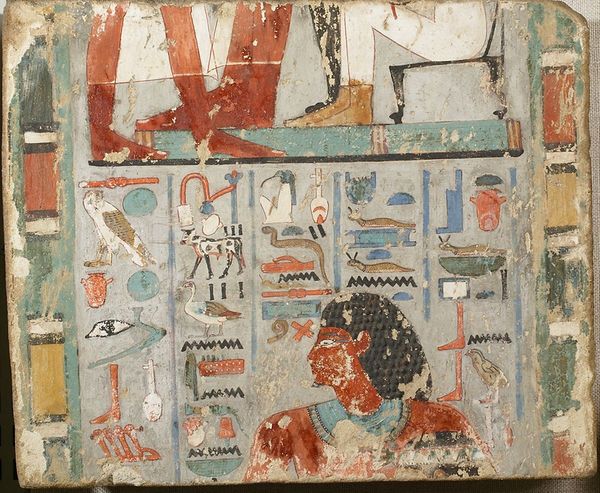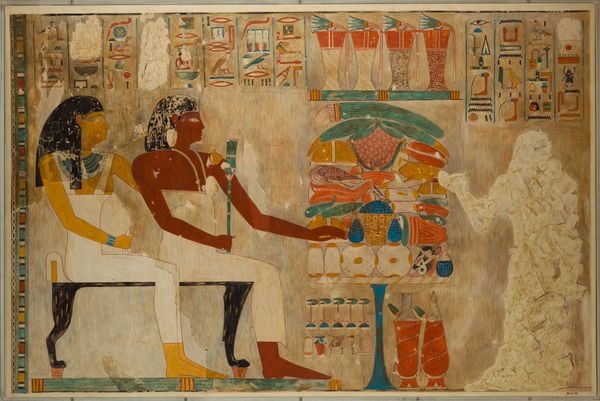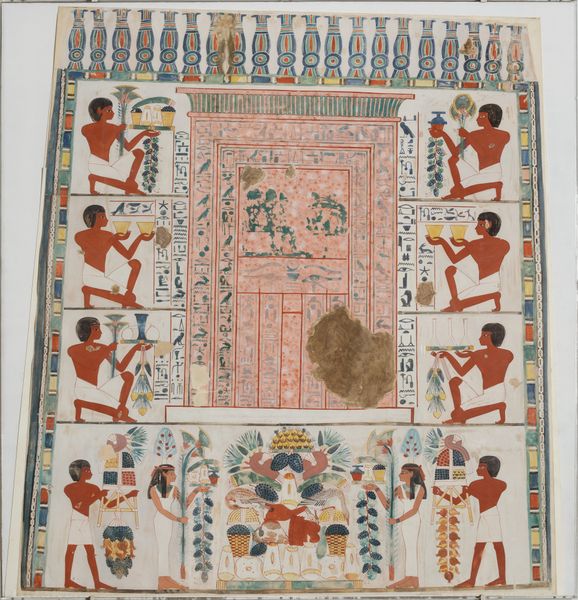
painting, fresco, mural
#
painting
#
ancient-egyptian-art
#
figuration
#
mural art
#
fresco
#
egypt
#
ancient-mediterranean
#
wall painting
#
history-painting
#
mural
Dimensions: Facsimile: H. 78.5 × W. 81 cm (30 7/8 × 31 7/8 in.); Framed: H. 80 × W. 82.6 cm (31 1/2 × 32 1/2 in.); Scale. 1:1
Copyright: Public Domain
Curator: Here we have "Osiris and the Four Sons of Horus", a fresco from around 1400 BC now residing at the Metropolitan Museum of Art. Editor: My first impression is one of stillness and formality. The figures are so rigidly posed, and the colors, while vibrant, feel constrained within these strict outlines. It almost feels… oppressive? Curator: Oppressive perhaps, or powerful in its deliberate, symbolic representation. Osiris, god of the afterlife, is depicted seated, a serene figure of judgment and authority. Each of the Four Sons of Horus is rendered with distinct animal heads. Canopic jars, used to hold mummified remains, took their shapes. We are observing, essentially, potent funerary iconography. Editor: Exactly! The funerary context speaks volumes. It underscores the complex relationship ancient Egyptians had with death and the afterlife. These aren't just aesthetic choices; they reflect deep-seated cultural anxieties and beliefs surrounding mortality, legacy, and how power transcends death. Curator: Absolutely. The sons themselves, Imsety, Hapi, Duamutef, and Qebehsenuef, represent different aspects of protection and preservation for the deceased's vital organs—liver, lungs, stomach, intestines, respectively. You see how this iconography encodes practical knowledge about the body? The bird imagery is incredibly consistent with funerary rites. Editor: But it’s also important to look beyond the practical or purely religious aspects. What social structures were in place to enable such a powerful visualization of beliefs? Whose stories are being centered, and whose are being silenced or erased within this visual narrative? These images bolster existing power structures and cultural values. Curator: While your points are vital to understanding this wall painting in its complex contexts, perhaps we can also allow room for the beauty and hope invested within these potent emblems. It certainly reminds us that throughout time people found ways to handle uncertainty and existential anxiety. Editor: A somber, valid observation. Perhaps contemplating how ancient world civilizations negotiated their place is precisely what helps us with this emotional burden to this day.
Comments
No comments
Be the first to comment and join the conversation on the ultimate creative platform.
